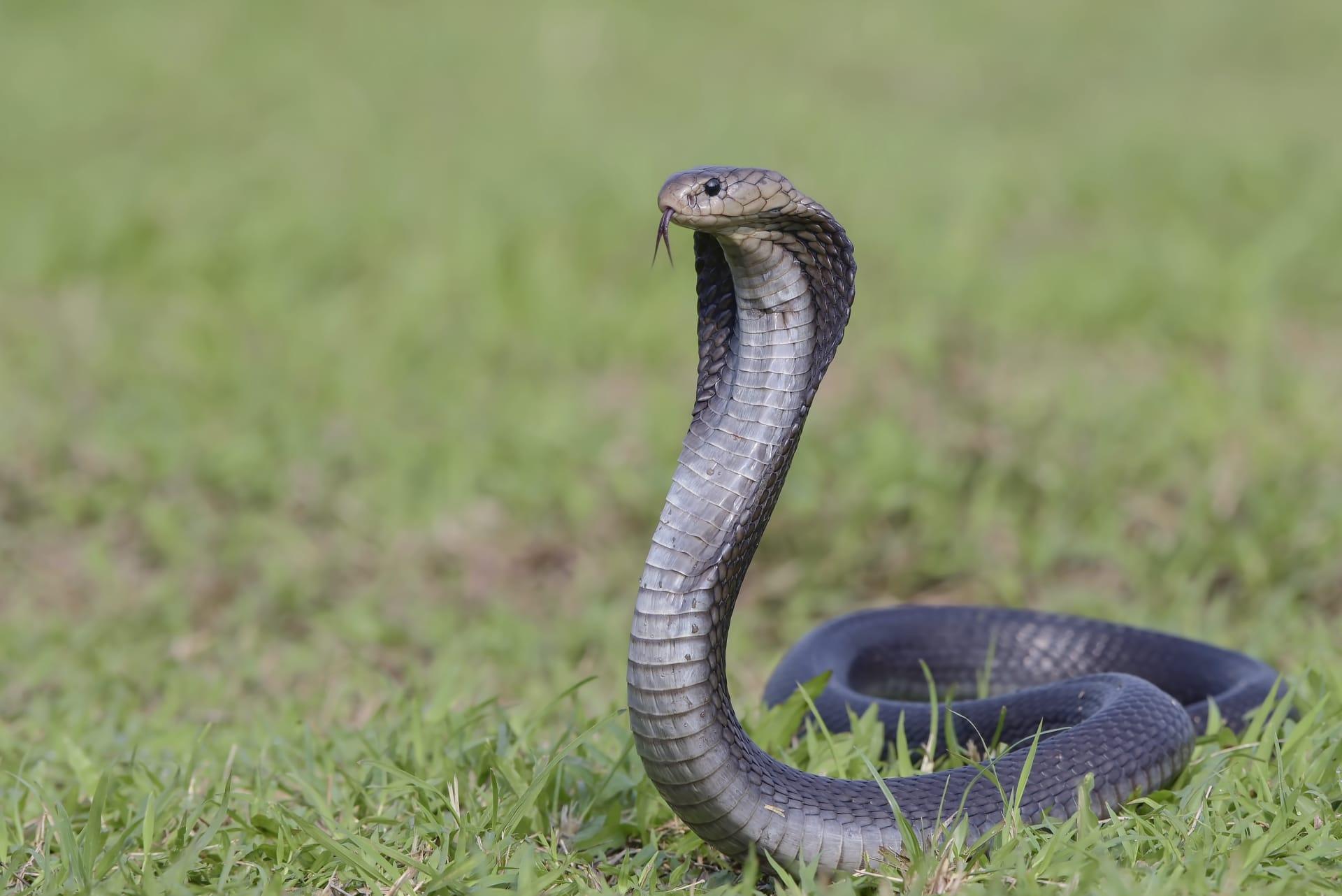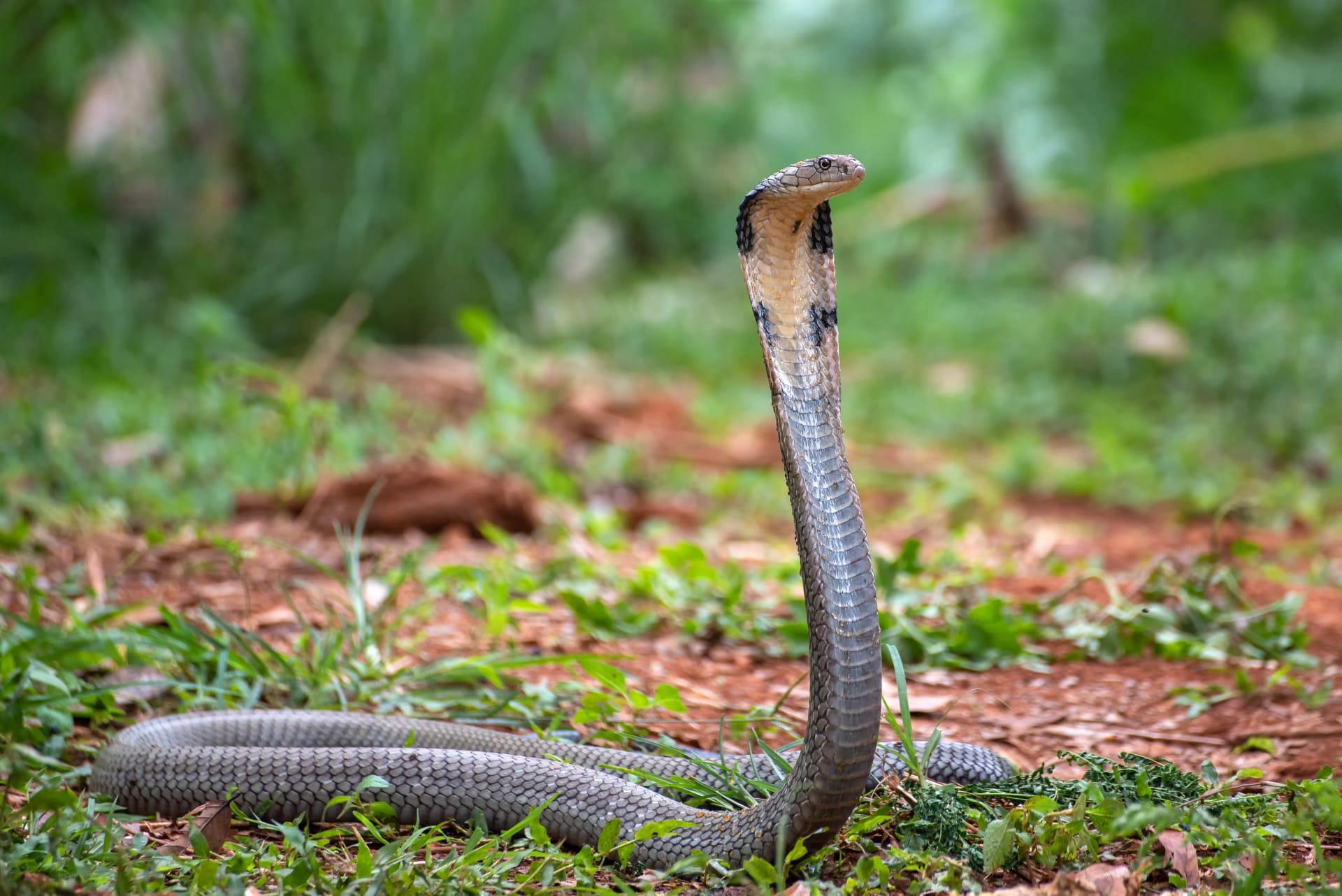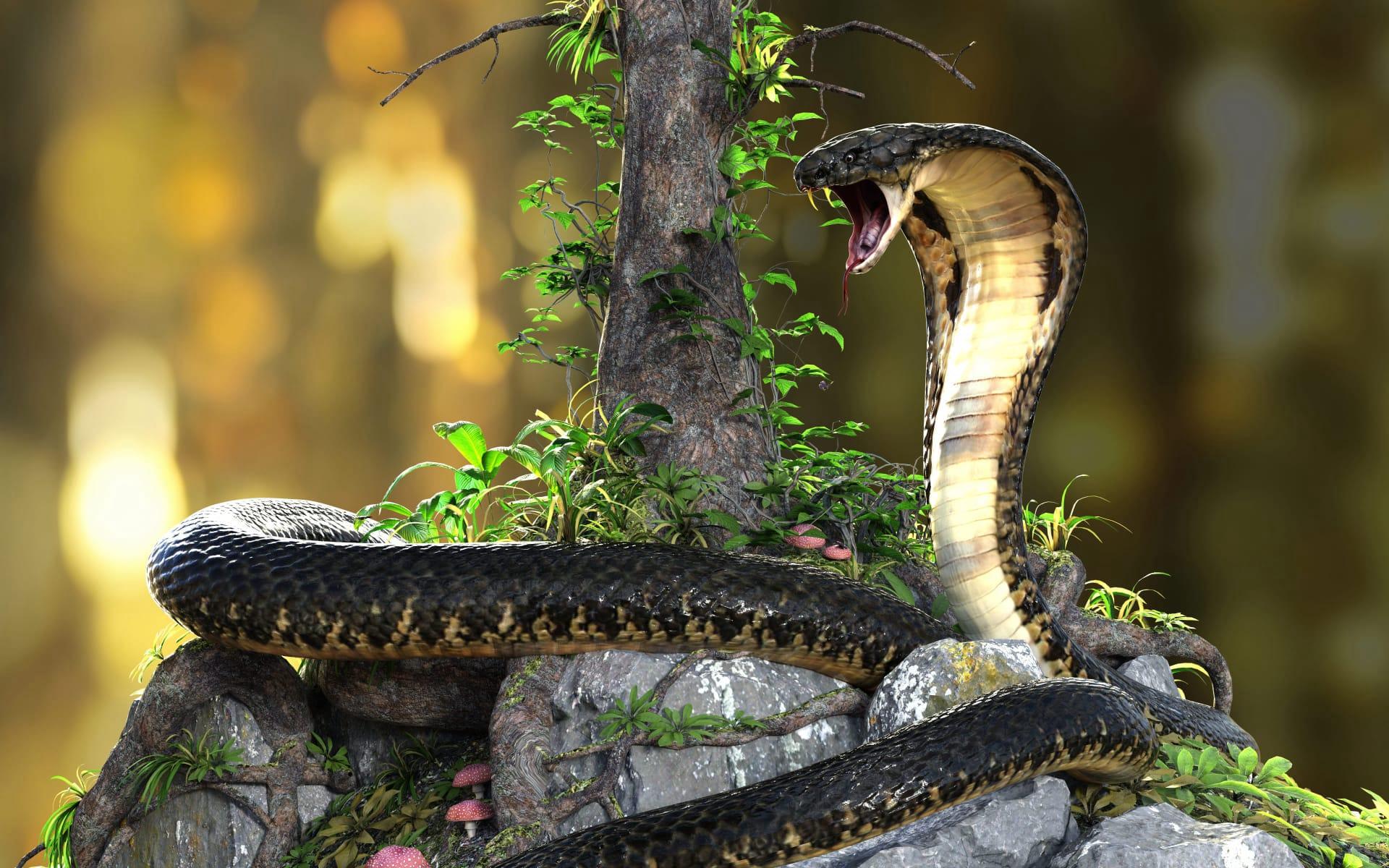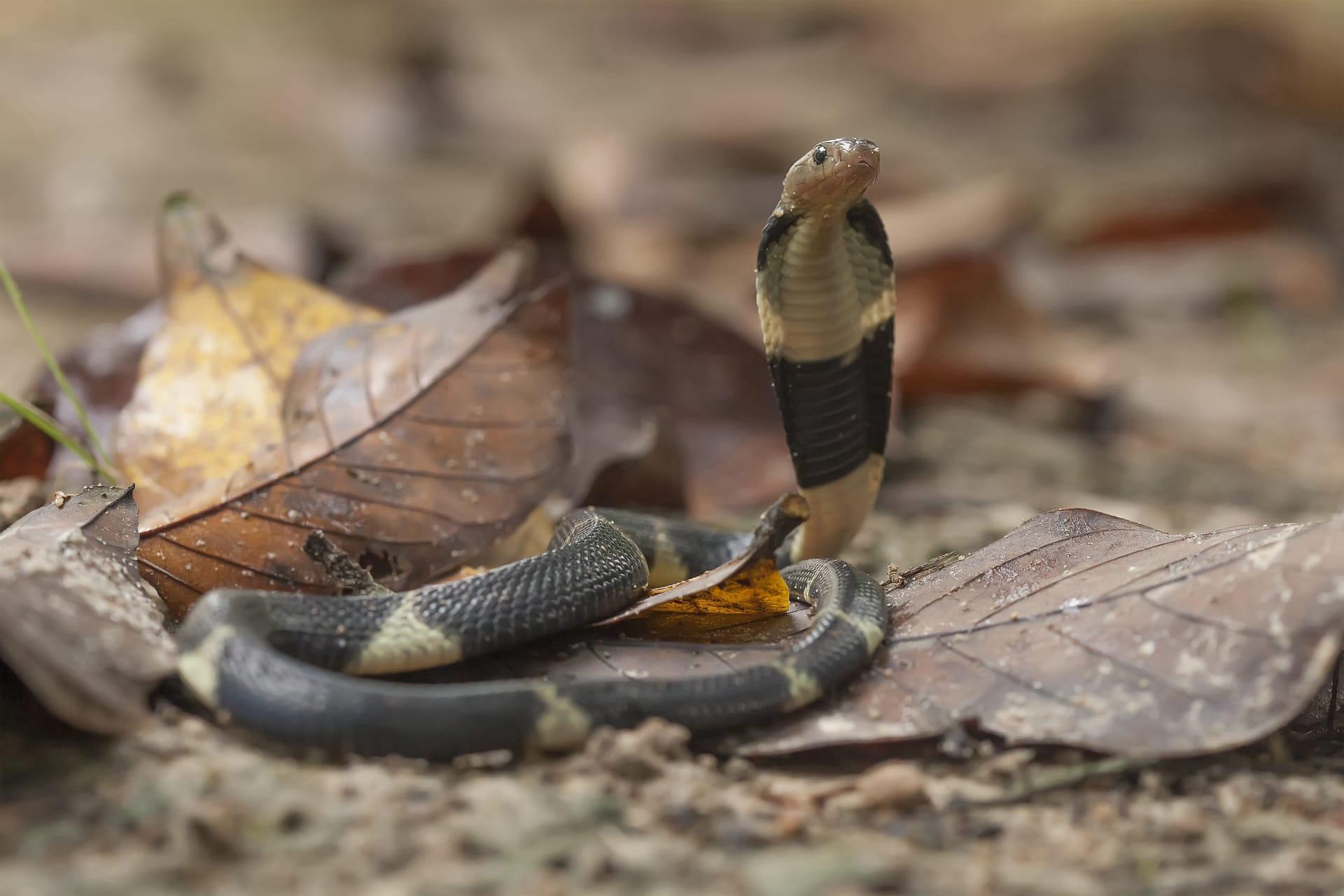1
The King Cobra, a name that evokes both awe and fear, is the world's longest venomous snake. These magnificent creatures can reach lengths of up to 18 feet (5.5 meters), which is about half the length of a city bus! Imagine encountering a snake as long as a Volkswagen Beetle - it's no wonder they're both respected and feared. King Cobras primarily inhabit forests in Southeast Asia and are known for their distinctive hoods and intimidating postures. When they feel threatened, they can raise one-third of their bodies off the ground and still move forward to confront a threat.
Another fascinating aspect of the King Cobra is its diet, which is unique among snakes. They primarily feed on other snakes, including venomous ones. This cannibalistic trait is rare in the snake world. Their favorite meal is the rat snake, but they won't hesitate to devour other venomous serpents, including smaller cobras. This dietary preference has earned the King Cobra the title of "ophiophagus," which literally means "snake-eater." Their specialized diet has equipped them with a resistance to the venom of other snakes, making them apex predators in their environment.

2
Besides their imposing size and unique diet, King Cobras are also renowned for their intelligence. They are among the few snake species that exhibit a high degree of both memory and learning capabilities. This intelligence is displayed in their hunting techniques and territorial behaviors. King Cobras can recognize their territories and often patrol them regularly. They have also been observed to avoid places where they have encountered threats in the past, demonstrating a remarkable memory for specific locations and events.
Another intriguing fact about King Cobras is their nesting behavior, which is quite unusual for snakes. Female King Cobras are the only snakes known to build nests for their eggs. They meticulously gather leaves and other debris, creating mounds that can be up to 55 inches (140 cm) wide and 20 inches (50 cm) high. The female then vigilantly guards the nest until the eggs hatch, displaying an unusual level of parental care among reptiles. This nesting behavior reflects a unique adaptation for protecting their offspring in a world full of predators.

3
The venom of the King Cobra is not the most potent among venomous snakes, but the amount it delivers in a single bite—up to 7 milliliters—is enough to kill 20 people, or even an elephant. King Cobra venom affects the respiratory centers in the brain, causing respiratory arrest and cardiac failure. The venom is a neurotoxin, and its effect can be felt within minutes of a bite, leading to severe pain, blurred vision, vertigo, drowsiness, and eventually paralysis.
King Cobras also have a unique way of communicating. They can emit a low-frequency hiss, much lower than other snakes. This low-pitched sound is akin to a growl, quite different from the high-pitched hiss commonly associated with snakes. This sound is often used as a warning to potential predators or threats, serving as a distinctive auditory signal to stay away. The ability of King Cobras to produce such a unique hiss is another example of their extraordinary adaptability and specialized traits.

4
King Cobras have a very distinctive mating ritual. During the breeding season, males engage in a form of combat known as 'wrestling.' This doesn't involve biting but rather consists of the males intertwining their bodies and trying to pin each other to the ground. The winner of this contest gets the right to mate with a female in the area. This wrestling match can last for hours and is a test of strength and stamina, reflecting the King Cobra's emphasis on physical prowess.
Interestingly, King Cobras can live for a long time compared to other snakes. In the wild, they have a lifespan of about 20 years, which is considerably longer than most other snakes that live only a few years. In captivity, with ideal conditions and no predators, they can live even longer, with the longest recorded lifespan being around 30 years. This longevity is quite remarkable and contributes to the King Cobra's status as a symbol of power and resilience in many cultures.

5
King Cobras have a significant cultural impact in the regions they inhabit. In many Southeast Asian cultures, they are revered and often associated with magical powers and spiritual significance. In India, for instance, the King Cobra is linked to the Hindu snake deity, Nagas, and is often worshipped during the Nag Panchami festival. The respect and awe surrounding these creatures are evident in local folklore and traditions, highlighting the deep connection between humans and nature.
The conservation status of the King Cobra is currently listed as 'Vulnerable.' Habitat destruction, primarily due to deforestation and human encroachment, is a significant threat to their population. Additionally, King Cobras are often killed out of fear or for their skin and body parts, which are used in traditional medicine. Conservation efforts are crucial to protect these majestic creatures and maintain the ecological balance they help uphold in their natural habitats. Their role as apex predators is vital in controlling the population of their prey, thus maintaining a healthy ecosystem.